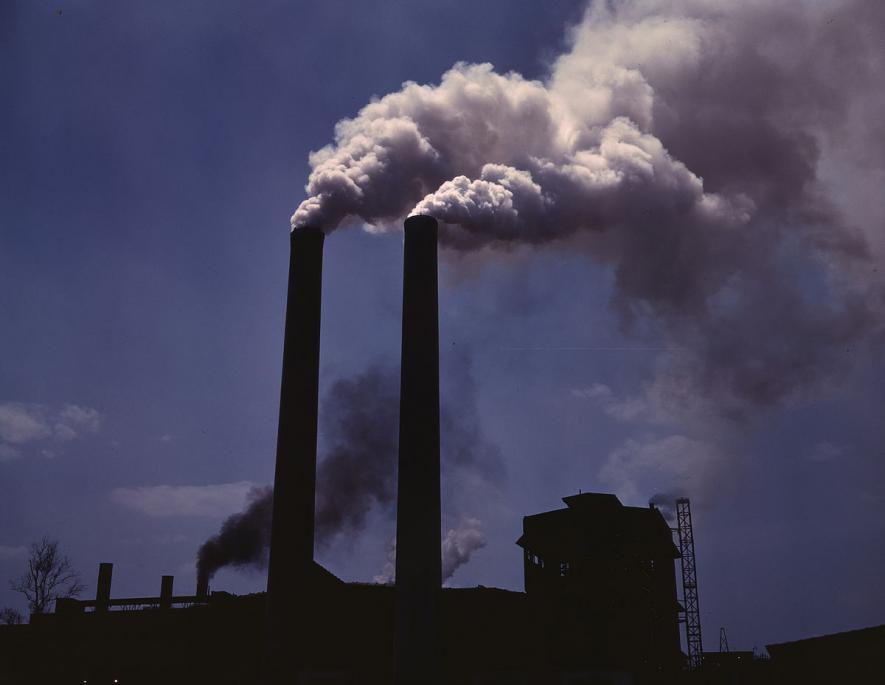Experts believe that findings from a new study may lead to new approaches for treating the initial lung changes that eventually progress to cancer.
Sandipan Talukdar
23 Apr 2022

Image Courtesy: Wikipedia
Air pollutants have many forms. Apart from gaseous chemical components like carbon, nitrogen, sulphur, etc., some tiny powdery particles also contribute to air pollution. These inhalable fine particulate matters (FPM) that circulate in the air have already been recognised as carcinogens. These particulate matters are now considered a substantial threat to global health. Although their role in the genesis of cancer is widely acknowledged, the mechanism through which they develop the disease remains largely enigmatic.
In this context, it is worth mentioning that the highly complex cancer disease also involves cells from our immune system (our body's defence mechanism). Some immune cells play a crucial role in preventing cancer progression by destroying the cells where cancer has been initiated. Can the tiny particulate matter in polluted air play a role in subverting the protective functions of the immune cells?
Researchers have been intrigued by this aspect, and encouragingly, the latest research published in eLife has shed new light on it. Experts believe that the new findings may lead to new approaches for treating the initial lung changes that eventually progress to cancer.
Zhenzhen Wang of Nanjing University, China and the study's lead author, said, "Despite its potential to cause mutations, recent research suggests that FPM does not directly promote and may even inhibit the growth of lung cancer cells. This suggests that FPM might lead to cancer through indirect means that support tumour growth. For example, some studies suggest FPM can prevent immune cells from moving to where they are needed."
To explore the indirect way through which the FPMs can exert their impact on cancer progression, the researchers first collected samples of FPM from seven locations in China. The team then attempted to analyse their effects on a particular kind of immune cell called the cytotoxic T cells (CTL). The CTLs play a crucial role in defending the growth of tumours. The researchers first administered lung cancer cells in mice not exposed to FPM. In these mice, induced with lung cancer cells but unexposed to FPM, the important immune cells were recruited to the lung to destroy the tumour cells. On the other hand, the researchers conducted the same experiment with mice administered with lung cancer cells and exposed to FPMs. They found that in the second set of mice, the movement of CTLs was delayed, which concomitantly allowed the tumour cells to grow and establish in the lung tissue.
The team then proceeded to decipher how and why the CTLs did not enter the lungs of those exposed to FPM. The team studied both the CTLs and the lung tissue structure. Their experiments revealed that the CTLs exposed to FPM still retained the ability to migrate, but there appeared a change in the lung tissue. The FPM exposed lung tissues got dramatically compressed up to the level where the space between the lung tissue and the space where CTLs move became congested. In addition, the researchers found that there was a high level of collagen. Collagen is a protein that provides biomechanical support for both tissues and cells. The lung tissues of the mice exposed to FPMs, due to the constriction had a significant effect on the movement of the CTLs. The CTLs struggled to move into the FPM exposed lung tissues where tumour formation had started.
They further analysed the lung tissues and found that they showed structural changes because of an increase in a particular type of collagen known as collagen IV. However, the team could not find any clue how FPM triggered this. Nevertheless, they found another hint. The enzymes, known as peroxidasin, make the collagen drive a specific type of situation, leading to the collagen formation becoming absurd.
"The most surprising find was the mechanism by which this process occurred. The peroxidasin enzyme stuck to the FPM in the lung, which increased its activity. This means that wherever FPM lands in the lung, increased peroxidasin activity leads to structural changes in the lung tissue that can keep immune cells out and away from growing tumour cells," explains Wang.
Lei Dong, a professor at Nanjing University and a co-author of the study, said, "Our study reveals a completely new mechanism by which inhaled fine particles promote lung tumour development. We provide direct evidence that proteins that stick to fine particulate matter can cause a significant and adverse effect, giving rise to pathogenic activity. Our discovery that peroxidasin is the mediator of this effect in lung tissue identifies it as a specific and unexpected target for preventing lung disease caused by air pollution."
No comments:
Post a Comment